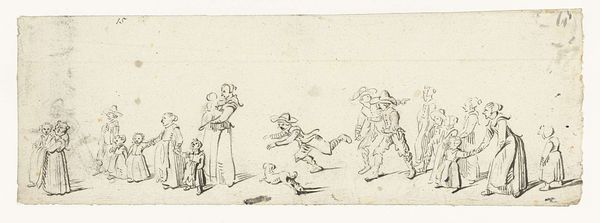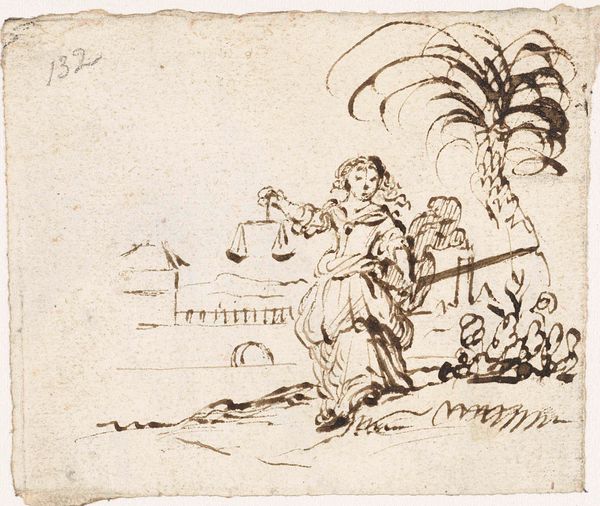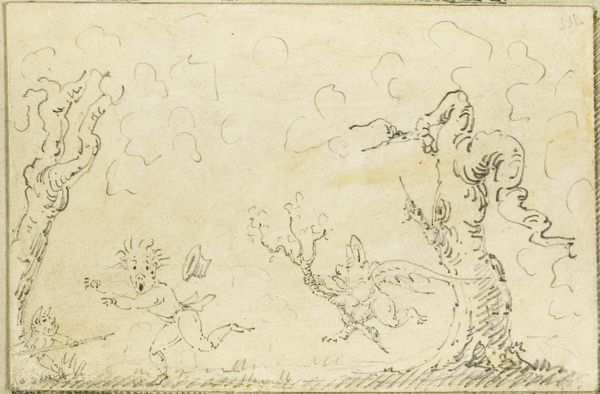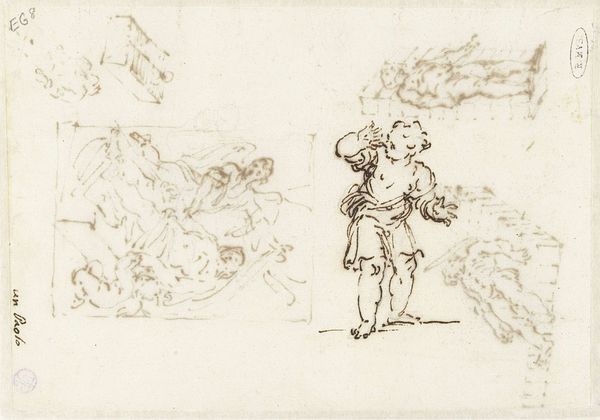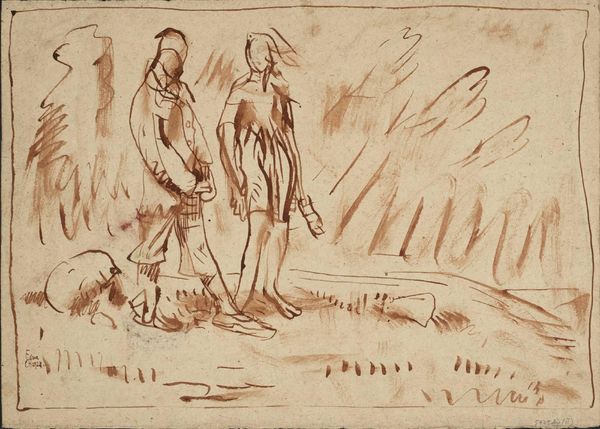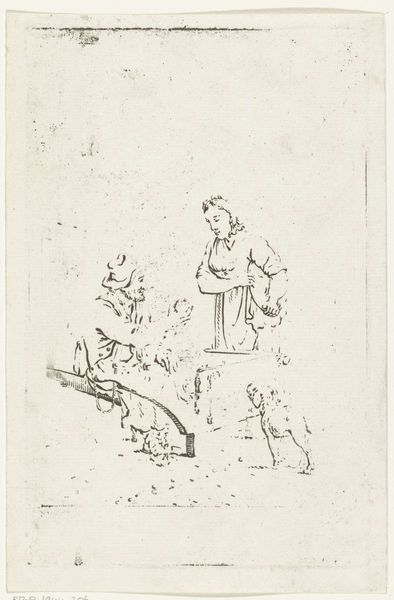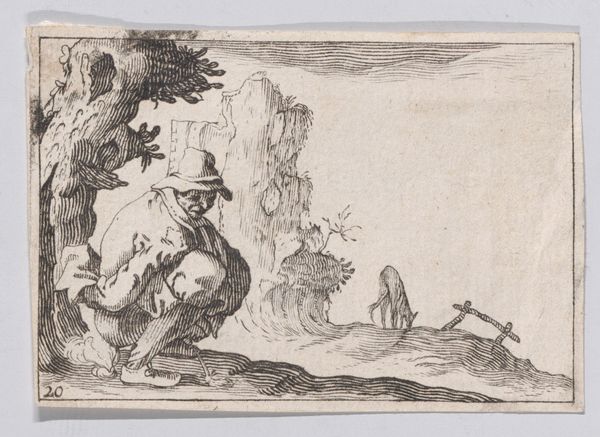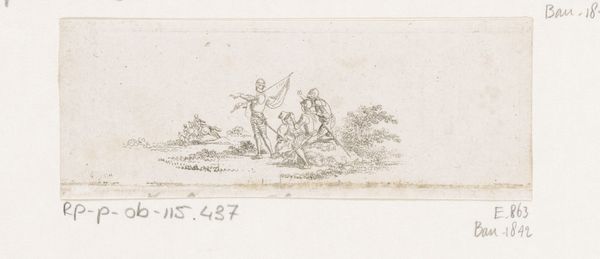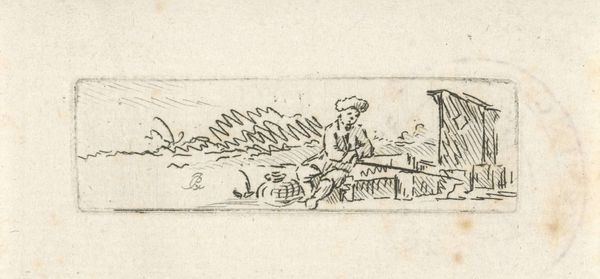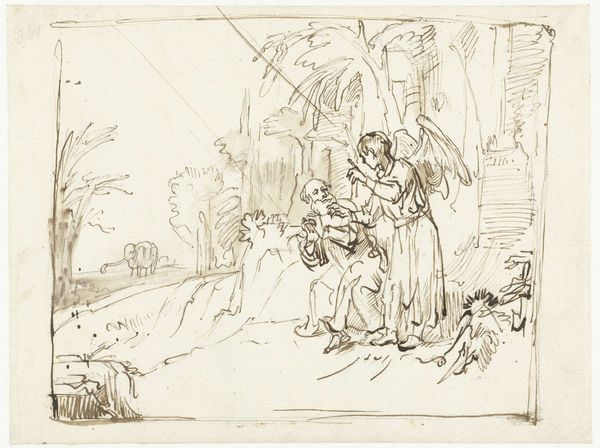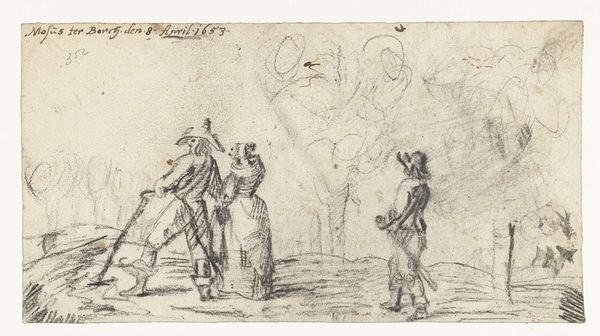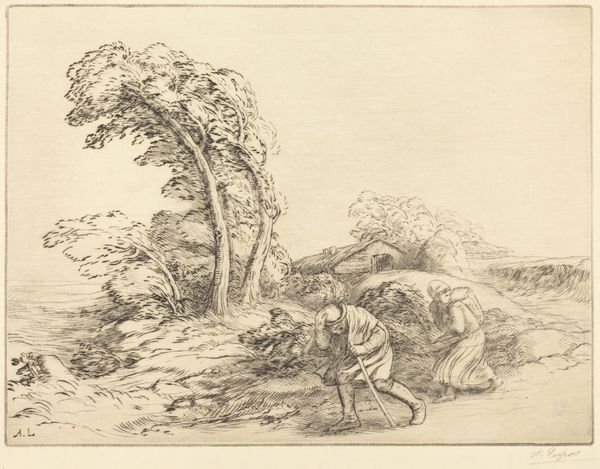
drawing, ink, pencil
#
drawing
#
ink drawing
#
narrative-art
#
dutch-golden-age
#
landscape
#
figuration
#
ink
#
pencil
#
genre-painting
Dimensions: height 102 mm, width 153 mm
Copyright: Rijks Museum: Open Domain
Curator: Here we have "Pastoral Scene with Two Figures," a drawing from around 1652 by Gesina ter Borch, housed here at the Rijksmuseum. Editor: My immediate impression is one of delicacy; the thin lines of reddish-brown ink give the whole composition a light and airy feel, despite the narrative scene playing out. Curator: Ter Borch was working during the Dutch Golden Age, a period of immense societal change and relative economic prosperity, but one still highly structured. It is likely that such idyllic representations are staged to offer some social commentary or at least reflect some idea about relationships, leisure and gender at the time. The two figures could tell a myriad of stories. Editor: Agreed. The drawing is full of intriguing little details. Take the figure on the left: note the line of the stick which creates a dynamic diagonal leading to the other figure and tying both landscape and its figures together. The whole work feels meticulously structured, as if its composition is crucial to the image itself. Curator: Indeed, the very act of depiction implies choice. It begs questions about societal hierarchy within families or the class dynamics structuring people’s interactions and relationships, don't you think? Editor: Yes, though consider too how she renders light. Notice the layering effect to create darker areas adding depth and shadow, while also softening lines around the figure of the woman to create a captivating central focus to the overall work. Curator: That also leads to another aspect of societal expectation. Note how the female figure in particular is positioned at the centre. Editor: Precisely. The subtle details draw us in – the curve of a branch, the slant of her hat and even those curious birds flying in the background add visual rhythm across the scene. It's a testament to the power of minimal means to create such a world in only ink and pencil. Curator: And within that world, she also invites us to consider gendered roles and expectations—which is itself something to examine when thinking about any artwork. Editor: I’ve certainly appreciated examining these relationships within her artistic choices of composition and light. Curator: It’s in considering the interplay between them, I think, where we truly find a richer appreciation of not just the art itself but the society and person who created it.
Comments
No comments
Be the first to comment and join the conversation on the ultimate creative platform.
